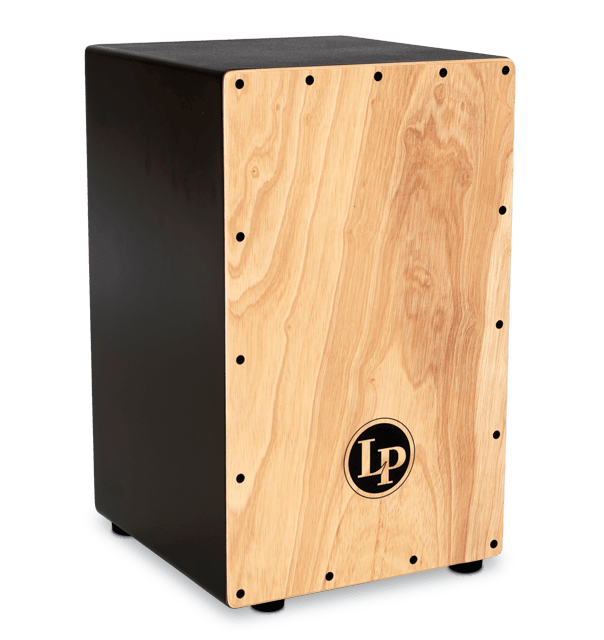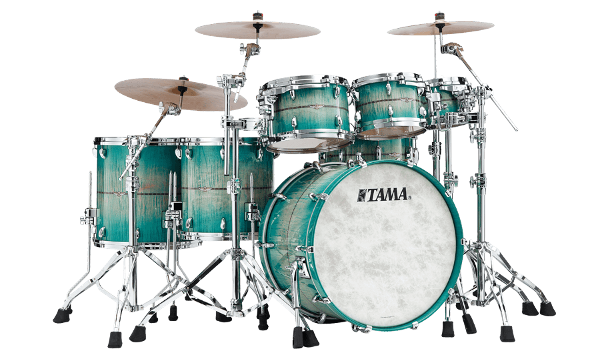How one simple wooden box can do it all
by Rino Monteforte

What if I told you that a small wooden box could have the same musical functioning ability as every $1000 + drum set, to play music from across the world— and across the world because you can carry that box in your backpack. Well, it can and I have done it over the last 3 years after becoming obsessed with the common tempo setting instrument that is the cajón. When I play it, I feel that I am able to add life to the music of any group I am playing with. Percussionization is a term that is undefinable by sources online. I believe it is the ability to use percussion instruments to enhance music on the fly. But, how can the cajón do this better than any other percussion instrument?

First some history. Many sources, Including articles from X8 Drums and Percussion and Ipassio, believe that the cajón “originated in Peru, when African slaves, brought to Peru from Angola, began using fruit crates as percussion instruments.” These crates were replacements for their native drums that they no longer had, after being brought to the Americas. “In Cuba, small dresser drawers were used for the same purpose.” Over the years, the instrument has been refined and has become an important part of Cuban and Peruvian Cultural music. The cajón was strictly isolated from all other musical genres “until the 1950’s when Afro-Peruvian artist Nicodemes Santa Cruz popularized” Peruvian music around the world. A group called Perú Negro that still plays today also popularized Peruvian music, bringing the music of the cajón around the world. Outside of the world of Peruvian and Cuban music, cajóns can be heard around the world in numerous genres of music. All of the different playing styles make it so attractive to musical artists everywhere. La La La with Sam Smith and Naughty Boy is a great example of this.
Let’s talk $$. A cajón is made in the shape of a rectangular box and this can be simple plywood $25 max, a little more with a hardwood upgrade.. Although cajóns vary in sizes, the average drum is “around 12 x 12 x 18 inches.” The box has six sides with five of the sides being non playable, made out of “sheets of hardwood that are ¾ of an inch thick.” The playing side or striking side of the box is known as the tapa, which is translated into top. The tapa is much thinner than the other sides. The back non playing side includes an open circle that can range in sizes based on the manufacturer. This open circle or sound hole serves to amplify the drums’ sound. Also depending on the maker, different metal and tin materials will be put inside of the drum, up against the opposite side of the tapa, to create different sounds. To make the metal or tin materials pressed up and heard when striking the tapa, screws are used to hold the tapa in place.
How to play. There are three different so-called tones or techniques that can be played on the cajón. First, the base tone which is when you strike the middle of the tapa with both your palm and fingers. When playing a base tone, you let your hand bounce off of the drum immediately after striking. The bass tone gives off a very “warm and full tone.” Playing in the high tone entails striking the upper quarter of the tapa with your full hand. When you let your hand come off right away, it gives off a snare drum type of sound. One source describes the sound created as “the ‘slap tone’ ” popular in Latin drumming. The last way is called the pressed tone. Playing this way is very similar to the high tone with the only difference being that instead of letting your hand come off the drum after striking, you leave your hand pressed against the tapa. The result is a short, staccato sound. These three ways of playing the cajón are used in the most common and traditional context where you strike the drum with your hands. Although, over the years, many percussionists have played the drum with various tools such as sticks, mallets, or brushes that are used on other percussion instruments.
Percussionize?! The versatility of the cajón, as well as the expediency and efficiency of creating sounds otherwise, requiring many different instruments may suggest a new verb: let’s call it percussionizing. Here’s how this works in practice: I am playing at a church service with my worship band. They do not have a drum set, or congas, or shakers, or cymbals, not anything. I come in with my cajón and have to play along and make the music sound good, giving not just a beat, but also accents and flourishes that make the music whole. I do this without any sheet music and interpret the nature of each song while in motion or progress, that is, on the fly. I believe that when I do this, I am percussionizing the music by adding the intense element that is some sort of percussion. Percussionization is something that I truly believe is beautiful and can take all different genres of music to a whole new level.

Seemingly simple, percussionizing the cajón is more efficient and error free than playing other instruments in the percussion family. The cajón has a bass drum in the middle section of the tapa(base tone), a snare drum in the upper part of the tapa(high tone), a high hat in the upper part of the tapa while playing the pressed tone, and many different tom-toms by hitting the tapa in its many different sections. Being able to enhance music with a small box that has one striking plane has a lot less margin of error than attempting to percussionize with a set that can have 8–16 striking planes. The ability to play the cajón with your hands in comparison to sticks also causes for a lot less margin of error with percussionists physically controlling the power of their hands in comparison to sticks that require special technique to play with and could possibly fall out of your hands and mess up a whole song. Taking both of these things into consideration, how can you say that a drum set can be as easy and flexible as the cajón? The overall ability to control the controllable and not ruin the music with loud dynamics makes the cajón the most percusionizable percussion instrument of them all!
A street drum— for the people. The cajón is also much more accessible to musicians of all backgrounds worldwide. When I was in the eighth grade, my mom bought me an expensive drum set that had all different elaborate drums and cymbals that I was very grateful for. Although, when I first encountered the cajón, I realized that this $100 dollar box can do all of the same things the $1000 set could do and even more! There are also many people out there that cannot afford to buy expensive drum sets and end up playing on crates and buckets on streets of cities nationwide. The cajón gives them the opportunity to percussionize music with the same passion and power as people who can afford expensive percussion instruments. The cajón offers a level playing ground for people from all walks of life to further percussionize our world today. Call it a democratic drum adding beats to the voices of the people.